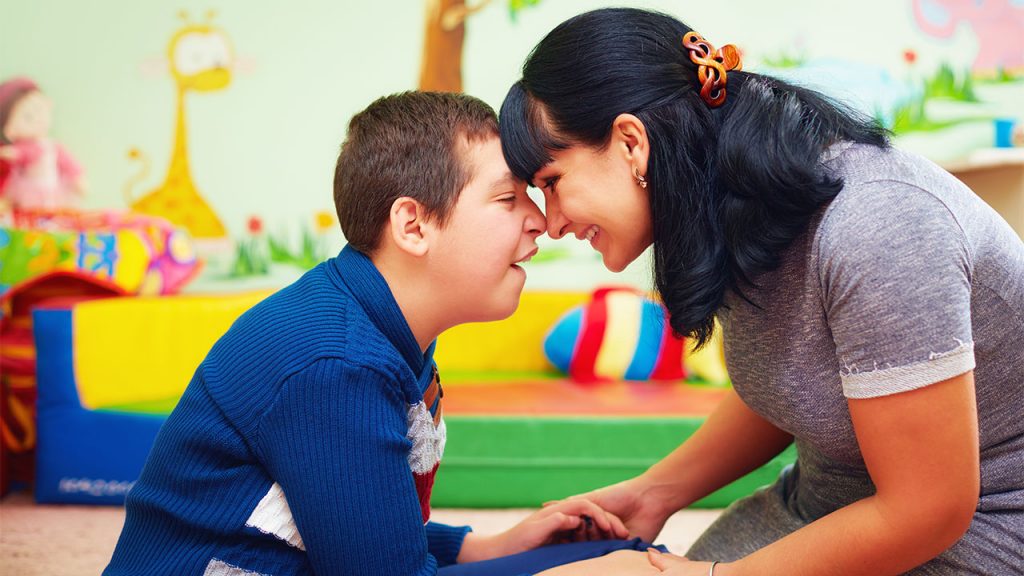Autism: A Mysterious Developmental Disorder

Who cares about what ‘they’ think? I don’t care!! Do you?
March 27, 2019
Electronic ‘screen time’ for a 6 month old: What formula is right for our kids?
April 29, 2019With autism on the rise, scientists and researchers are working diligently behind the scenes to understand the reasons for the rise. No one knows for sure what is driving the rise in the disorder. For instance, it was reported that for many years, autism prevalence rates have been cited to be approximately 7 in 10,000but recently, estimates range from about 30 in 10,000 to 1 in 68 (As cited in Zylstra et al. 2014, Journal of Family Practice).
This topic really hit close to home for me because I have family members and friends affected by this disorder. I have seen firsthand, the struggles of these parents i.e. managing the disorder and dealing with the stigmatization that comes with it. Despite the struggles and challenges, these parents always show unconditional love and support for their loved ones. For me, seeing the commitments of these parents is what parenting and motherhood is all about!
It is a lifelong disorder that knows no boundaries! What is this mysterious disorder, you might ask? According to the National Institute of Mental Health (NIMH), “Autism spectrum disorder (ASD) is a developmental disorder that affects communication and behavior. Although autism can be diagnosed at any age, it is said to be a “developmental disorder” because symptoms generally appear in the first two years of life”. Autism is identified as a “‘spectrum’ disorder because there is wide variation in the type and severity of symptoms people experience” (NIMH). “While scientists don’t know the exact causes of ASD, research suggests that genes can act together with influences from the environment to affect development in ways that lead to ASD” (NIMH)
So, a big shout out to all the parents and caregivers of autistic children and adults out there, just to let you that you are doing an amazing job and your children, loved ones are fabulous and smart!
Don’t forget that the American Academy of Pediatrics recommends that all children be screened for autism at both 18 months and 24 months. So talk to your physician about it because early intervention can change a life!
Despite the challenges, remember to always focus on the strengths of these individuals and use that to help overcome their weaknesses. Tap into readily available resources to help achieve their goals.
Familiarize yourself with signs and symptoms, risk factors etc. below and if you need assistance, please do not hesitate to reach out to us.
Types of Autism
- Autistic disorder (classic autism)
- Asperger’s’ syndrome
- Pervasive developmental disorder not otherwise specified (PDD-NOS
(Source: National Institute of Mental Health)
Signs and Symptoms of ASD
Social communication / interaction behaviors may include:
- Making little or inconsistent eye contact
- Tending not to look at or listen to people
- Rarely sharing enjoyment of objects or activities by pointing or showing things to other
- Failing to, or being slow to, respond to someone calling their name or to other verbal attempts to gain attention
- Having difficulties with the back and forth of conversation
- Often talking at length about a favorite subject without noticing that others are not interested or without giving others a chance to respond
- Having facial expressions, movements, and gestures that do not match what is being said.
- Having an unusual tone of voice that may sound sing-song or flat and robot-like.
- Having trouble understanding another person’s point of view or being unable to predict or understand other people’s actions.
(Source: National Institute of Mental Health)
Restrictive / repetitive behaviors may include:
- Repeating certain behaviors or having unusual behaviors. For example, repeating words or phrases, a behavior called echolalia
- Having a lasting intense interest in certain topics, such as numbers, details, or facts
- Having overly focused interests, such as with moving objects or parts of objects
- Getting upset by slight changes in a routine
- Being more or less sensitive than other people to sensory input, such as light, noise, clothing, or temperature
(Source: National Institute of Mental Health Mental)
Strengths Include:
- Being able to learn things in detail and remember information for long periods of time
- Being strong visual and auditory learners
- Excelling in math, science, music, or art
(Source: National Institute of Mental Health)

Risk Factors
- Having a sibling with ASD
- Having older parents
- Having certain genetic conditions—people with conditions such as Down syndrome, fragile X syndrome, and Rett syndrome are more likely than others to have ASD
- Very low birth weight
(Source: National Institute of Mental Health)
Treatment and Therapies
- Medication
- Behavioral, psychological, and educational therapy
- Social services programs
(Source: National Institute of Mental Health)


6 Comments
Nice
nicely written
Well detailed article. I enjoyed reading it.
I’m glad!
Congratulation Dr. Bidmus. And thanks r all the insight.
Thank you!